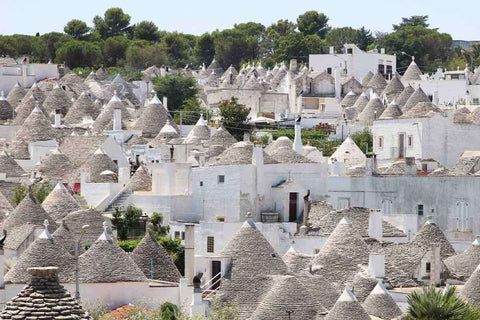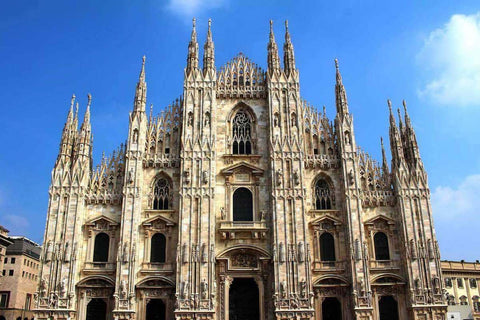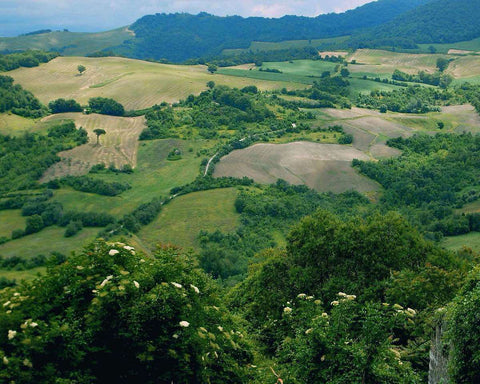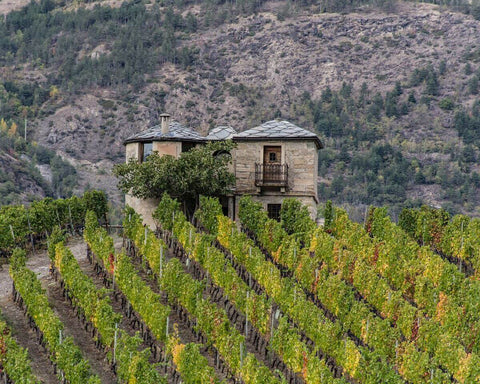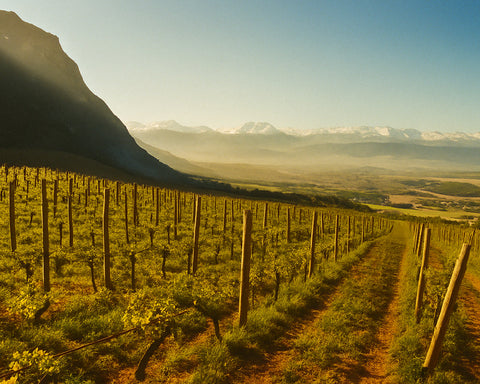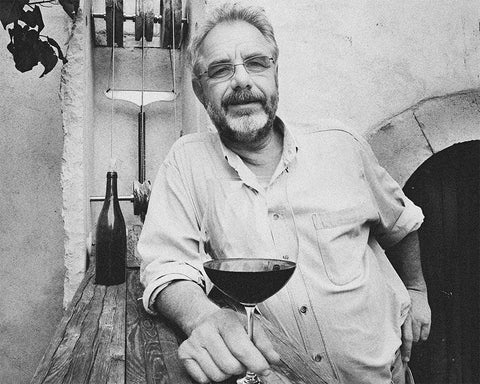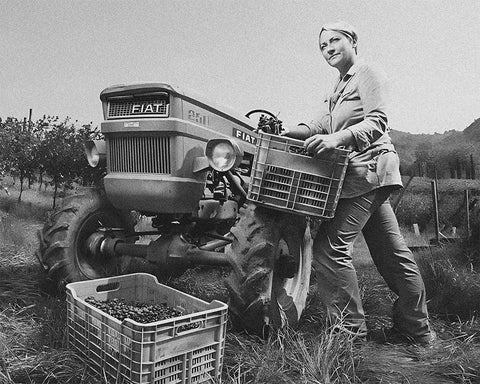Apulia, known as "Puglia" in Italian, is a region that stands as one of Italy's most vibrant and historically rich wine regions. Situated in the country's southeastern part, this stunning region stretches along the Adriatic and Ionian Seas, offering a diverse landscape that includes rolling plains, rugged coastline, and fertile valleys.
Over the centuries, Apulia has developed a reputation for its abundant agricultural production, including some of Italy's most beloved wines. The region's emphasis on traditional farming methods and respect for the terroir has helped it produce wines celebrated for their quality and unique character.
The wines from Apulia are not just beverages; they represent the region's storied history, dedication to excellence, and enthusiastic pursuit of vinicultural perfection, especially evident in its renowned Primitivo and Negroamaro wines.
Table of Contents
History of Apulia
Apulia, bordered by the Adriatic Sea to the east and the Ionian Sea to the south, has long been a region of significant strategic importance, geopolitically and agriculturally. Its history is a rich blend of cultures, from the ancient Greeks and Romans to the Byzantines and Normans, all of whom recognized the region's potential for wine production.
Over the centuries, Apulia evolved from a key player in the Roman Empire's grain supply to a prominent wine-producing area in medieval and modern times. Various civilizations influenced the region's viticulture, each leaving its mark on the techniques and varieties cultivated.
The history of winemaking in Apulia dates back to the ancient Greeks, who introduced vine cultivation to the region. Archaeological evidence shows that viticulture was well-established when the Romans arrived in the 3rd century BCE.
The Romans, known for their advanced agricultural practices, recognized Apulia's fertile land and ideal climate for viticulture. They expanded the vineyards and introduced new winemaking techniques, solidifying Apulia's reputation as a major wine-producing area.
Following the fall of the Roman Empire, viticulture in Apulia was preserved and further developed by monastic orders and local aristocracy. Monasteries became centers of agricultural knowledge, and monks meticulously maintained vineyards and documented their winemaking practices.
During the medieval period, the nobility and religious institutions established vineyards and wineries, contributing to the region's reputation for producing fine wines. The Normans, who ruled Apulia in the 11th century, played a significant role in promoting and protecting the region's viticultural interests.
The Renaissance marked a turning point in Apulia's winemaking history. This era saw the rise of several indigenous grape varieties, such as Primitivo and Negroamaro, which became the cornerstone of Apulia's viticulture. These grapes thrived in the region's diverse terroir, producing wines with remarkable depth and character.
One of the most notable developments during this period was the emergence of robust and flavorful red wines, which gained popularity across Europe. The 19th century brought further innovation and challenges to Apulia's wine industry, with advancements in winemaking techniques and the devastating impact of phylloxera.
The phylloxera crisis prompted a replanting effort, often using American rootstocks resistant to the pest, allowing the region to recover and continue its winemaking traditions. The early 20th century was marked by the challenges of the World Wars and economic turmoil, but the resilience of Apulia's winemakers shone through as they rebuilt and rejuvenated their vineyards.
In recent decades, Apulia has firmly established itself as one of Italy's premier wine regions. The region's commitment to quality, combined with its unique terroir, has earned it a place among the elite wine-producing areas of the world. The appellation system, introduced in the 1960s, further cemented Apulia's reputation by protecting and promoting its wines.
Terroir of Apulia
Apulia's terroir is characterized by its unique climate, topography, and soil interplay. The region enjoys a Mediterranean climate, with hot, dry summers and mild, wet winters moderated by the influence of the surrounding seas.
The flat and gently rolling terrain, particularly in areas like Salento and the Murge plateau, provides an optimal vineyard setting, ensuring ample sunlight and excellent drainage. The soil composition varies, ranging from limestone and clay to sandy and volcanic soils, each contributing to the distinct characteristics of the wines produced.
This diverse terroir lends itself to cultivating many grape varieties, each expressing a unique facet of the region's multifaceted character.
The Geology of Apulia
Apulia's landscape predominantly comprises flat plains and low hills, with elevations generally ranging from sea level to 400 meters above sea level. The region is divided into several sub-regions, each with unique geological characteristics. The primary wine-producing areas include Salento, Castel del Monte, and the Tavoliere delle Puglie, each contributing distinct terroir profiles.
- Salento: Known for its limestone and clay soils, Salento provides excellent conditions for growing high-quality grapes. The region is famed for Primitivo and Negroamaro, which thrive in the well-drained soils and benefit from the area's significant diurnal temperature variation.
- Castel del Monte: Characterized by rocky, calcareous soils interspersed with clay, Castel del Monte is ideal for producing robust red wines from Indigenous varieties such as Nero di Troia.
- Tavoliere delle Puglie: This area features fertile, alluvial soils. Tavoliere is known for its expansive vineyards and the production of both red and white wines, including the fragrant Bombino Bianco.
The region's geological diversity ensures that each grape variety can match its optimal soil type, enhancing the grapes' expression and complexity.
Climate and Its Influence
Apulia's climate is Mediterranean, characterized by hot summers and mild winters, with significant temperature variation between day and night. This diurnal range is crucial for grape ripening, allowing the development of sugars during the day and preserving acidity at night. The region's microclimates, influenced by the surrounding seas, further contribute to the distinctiveness of Apulian wines.
The Grapes of Apulia
Apulia has several indigenous grape varieties, each adapted to the region's unique terroir. The most notable are Primitivo, Negroamaro, Nero di Troia, and Bombino Bianco.
Red Grape Varietals
- Primitivo: The cornerstone of Apulia's most celebrated wines, such as Primitivo di Manduria. It is known for its deep color, high alcohol content, and rich dark fruit and spices flavors.
- Negroamaro: Widely planted and known for its deep color, robust structure, and complex aromas of blackberry and earthy notes.
- Nero di Troia: Produces structured wines with firm tannins and flavors of dark berries and spices, often aged to develop complexity.
- Susumaniello: Known for its vibrant acidity and intense flavors, often used in blends to add complexity and freshness.
White Grape Varietals
- Bombino Bianco: The most Widely planted white grape, known for its bright acidity and fresh, floral aromas. Often used in sparkling wines.
- Verdeca: Produces fresh, aromatic wines with notes of citrus and green apple.
- Fiano: Known for its rich, nutty flavors and good aging potential, producing complex and full-bodied wines.
- Malvasia Bianca: Often used in sweet and aromatic wines, with floral and tropical fruit notes.
Top Wines of Apulia
Primitivo di Manduria: Often referred to as the "Zinfandel of Italy," Primitivo di Manduria is a testament to Apulia's vinicultural prowess. Made from the Primitivo grape, this wine is characterized by its deep ruby color, intense aromas of ripe berries, and robust, spicy flavors.
The wine undergoes extended aging in oak barrels, resulting in a wine of profound depth, structure, and elegance.
Salice Salentino: Salice Salentino, made primarily from Negroamaro, is known for its rich and complex flavors. These wines often exhibit blackberries, plums, and spices aromas, with a full-bodied and velvety texture.
The terroir of Salice Salentino, with its calcareous soils, imparts a certain elegance to the wines, with notes of dark fruits, violets, and earthy undertones. While Salice Salentino undergoes a shorter aging process compared to Primitivo di Manduria, it still produces wines of remarkable complexity and longevity.
Other Notable Wines: While Primitivo di Manduria and Salice Salentino are undoubtedly the crown jewels of Apulia, the region is also home to other notable wines like Castel del Monte, Aglianico, and Moscato di Trani. Castel del Monte, known for its robust structure and dark fruit flavors, pairs well with various hearty dishes.
Aglianico, often called the "Barolo of the South," is a rich and complex wine with high aging potential. Moscato di Trani, a sweet wine, is known for its fragrant floral and honey aromas, making it a favorite dessert wine.
Cuisine and Typical Products of Apulia
Apulia's culinary landscape is as vibrant and diverse as its wines. The region is famed for its simple yet flavorful dishes, strongly emphasizing local and seasonal ingredients.
Olive oil, particularly the extra virgin variety, is honored in Apulian cuisine. Dishes like "Orecchiette alle Cime di Rapa," pasta with turnip greens, capture the essence of Apulia on a plate. Often freshly caught from the Adriatic and Ionian Seas, seafood plays a significant role in the region's gastronomy.
Apulia is also known for its cheeses, with Burrata, Caciocavallo, and Ricotta being some of the notable varieties. The culinary traditions of Apulia and its exceptional wines offer a gastronomic journey that resonates with the region's rich heritage and passion for excellence. Let's dive deep into Apulia's cuisine and typical products.
Apulian Antipasti
In Apulia, a meal often starts with a selection of antipasti. These appetizers showcase the region's diverse flavors and set the stage for future courses. A typical antipasti spread might include:
- Bruschetta: Grilled bread topped with ripe tomatoes, garlic, basil, and a drizzle of olive oil.
- Frittata di Cipolle: Onion frittata made with fresh eggs and sweet onions, often served warm or at room temperature.
- Polpette di Pane: Bread dumplings seasoned with herbs and cheese, often fried to golden perfection.
- Zucchine alla Scapece: Marinated zucchini slices with mint, vinegar, and garlic, served chilled.
Apulian Primi Piatti (First Courses)
The first course in an Apulian meal often features pasta, risotto, or hearty soups. These dishes showcase the region's grains, rice, and seasonal vegetables.
- Orecchiette alle Cime di Rapa: The region's signature pasta dish made with "little ears" pasta and turnip greens sautéed with garlic, anchovies, and chili flakes.
- Cavatelli con Cozze: Small pasta shells with fresh mussels, garlic, and tomatoes.
- Fave e Cicorie: Pureed fava beans served with sautéed chicory greens, a rustic and hearty combination.
- Riso, Patate e Cozze: A baked casserole of rice, potatoes, and mussels flavored with onions, tomatoes, and pecorino cheese.
Apulian Secondi (Second Courses)
Apulia is known for its high-quality meats and fresh seafood. The second course often highlights these prized ingredients.
- Brasciola: Rolled beef stuffed with garlic, parsley, and pecorino cheese, then slow-cooked in tomato sauce.
- Polpo alla Pignata: Octopus stewed in a clay pot with tomatoes, onions, and potatoes.
- Agnello al Forno: Oven-roasted lamb seasoned with rosemary, garlic, and olive oil.
- Pesce Spada alla Griglia: Grilled swordfish steaks marinated in olive oil, lemon, and herbs.
Apulian Contorni (Side Dishes)
Apulian cuisine doesn't neglect vegetables. Many side dishes and salads highlight the region's produce.
- Cicoria Ripassata: Sautéed chicory greens with garlic, olive oil, and chili flakes.
- Peperonata: A stew-like dish of slowly cooked bell peppers, onions, and tomatoes, often served at room temperature.
- Melanzane Ripiene: Stuffed eggplants filled with breadcrumbs, cheese, and herbs, then baked until tender.
Apulian Formaggi (Cheeses)
Apulia produces some of Italy's most renowned cheeses. A cheese course often follows the main dishes.
- Burrata: A creamy cheese made from mozzarella and cream, known for its rich, buttery texture.
- Caciocavallo: A stretched-curd cheese with a sharp, tangy flavor, often aged for several months.
- Ricotta: Fresh whey cheese, often used in both savory and sweet dishes.
- Canestrato Pugliese: A hard sheep's milk cheese with a tangy flavor, often aged for several months.
Apulian Dolci (Dessert)
Apulian desserts often feature local almonds, honey, and seasonal fruits.
- Pasticciotto: A pastry filled with custard or ricotta cheese, often enjoyed with a cup of coffee.
- Cartellate: Crispy, spiral-shaped pastries coated with honey or vincotto (cooked wine must).
- Torta di Mandorle: Almond cake made with ground almonds, eggs, and sugar, sometimes flavored with lemon zest.
- Zeppole: Fried dough balls dusted with powdered sugar and sometimes filled with custard or jelly.
Typical Products of Apulia
Apulia's cuisine is based on high-quality local products. Many of these have achieved protected status, ensuring authenticity and traditional production methods.
Olive Oil: Apulia's Liquid Gold
Apulia is Italy's largest producer of olive oil, particularly extra virgin olive oil. The region's climate and soil conditions are ideal for olive cultivation, resulting in oils with a rich, fruity flavor and a hint of bitterness. The Olio Extravergine di Oliva Terra di Bari DOP is a notable variety known for its high quality.
Wheat: The Plains' Bounty
Apulia is also a major producer of durum wheat, used to make pasta and bread. The Pane di Altamura DOP, a traditional bread made from durum wheat, is renowned for its crispy crust and soft, flavorful crumb.
Cheese: From Mountains to Plains
Apulia produces a wide variety of cheeses, each reflecting the characteristics of its production area.
- Burrata di Andria IGP: Known for its creamy interior and delicate flavor.
- Canestrato Pugliese DOP: A hard cheese made from sheep's milk with a tangy and spicy flavor.
- Ricotta Forte: A fermented ricotta cheese with a strong, tangy flavor, often used as a spread or in cooking.
Meat and Charcuterie
Apulian meat products are known for their quality and distinctive flavors.
- Capocollo di Martina Franca DOP: A dry-cured pork neck or shoulder seasoned with spices and smoked with oak and Mediterranean herbs.
- Salsiccia di Faeto: A traditional sausage made from pork, seasoned with fennel seeds and other spices.
- Lardo di Colonnata: Cured pork fatback, often served thinly sliced as an appetizer.
Fruits and Vegetables
Apulia's varied climate allows for cultivating a wide range of produce.
- Cime di Rapa: Turnip greens that are a key ingredient in many traditional dishes, such as Orecchiette alle Cime di Rapa.
- Lampascioni: Wild onions with a slightly bitter taste, often pickled or used in salads.
- Fichi: Figs that are often enjoyed fresh, dried, or used in desserts and preserves.
